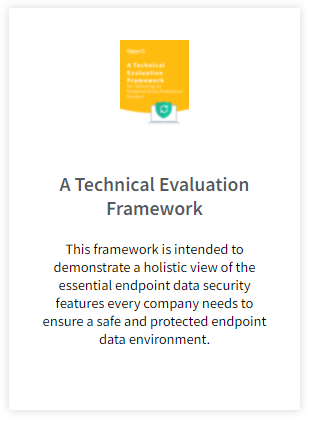The best way to protect yourself, your users and your business against ransomware is by setting up a proactive defence. The ransomware statistics paint a frightening picture for anyone in charge of IT: In Q3 2016 alone, 18 million new malware samples were captured. Source: Panda Labs What that means is that the criminals…
Times are changing, can tape keep up?
For many years, tape was considered to be an integral part of any successful data backup and recovery strategy.
Times change however and, while tape still has a role to play as the final cog in the data protection wheel, it is just not practical as a primary backup technology for business users.
Current statistics (highlighted below) do not support the operational effectiveness of tape as the primary backup tool and, to be honest, the costs involved with using the technology as such are simply not favourable.
Yes, as mentioned tape does have a place, however fact remains that there are various challenges associated with using this technology and /or other solutions that struggle to make the grade in terms of business continuity when the data chips are down.
6 features data backup and recovery solutions should offer.
1. Reliability: Disk-to-disk backup solutions are far more reliable than tapes. Using this technology your data resides on disk drives – secure and accessible to you when you need it. Tape is an unstable medium to store data on; with E-secure estimating that up to 71% of restores fail. Fact is, using tape, life really is like a box of chocolates – you never know what you are going to get until you try to restore lost data.
2. Central control and ease of use: IT professionals need to have functionality that places them in full control over their company’s data, including that of the company’s mobile users. The software used should offer reporting functions and should be easy to configure for all users, deployable from one central location.
3. Scalability: It is desirable to use a data backup and recovery solution that allows for scalability to any number of desktops and notebooks. As you grow the same solution should be able to offer the same kind of hassle free automated backup service, and accommodate a more complex company environment without placing any additional requirements on valuable IT resource.
4. Security: Data encryption is key to keeping your data safe from unwanted internal and external exposure. Time and again we read headlines of company executives, not to mention outside forces, causing irreparable damage through data breaches and malicious destruction. Not only does this necessitate the effective backing up of business critical data, but it also means that any backdoor to that data needs to be protected and, thus, encrypted.
General consensus is that encryption through tape often takes too long to fit into a normal backup window. The best solution is one that simultaneously backs up and encrypts user data.
5. Cost: The cost of user downtime relates to more than just the IT resource it takes to attempt to retrieve lost data, but also includes the overall impact on company productivity and possible damage to reputation, as well as the real cost of the technology used in the backup and recovery process. Old warhorse solutions like tape are labour intensive, often with high handling costs and risk for potential damage.
A reliable disk-to-disk backup and recovery solution offers security and ease of use, dramatically cutting the risks and downtime associated with data loss.
6. All access, all the time. Sitting around waiting on tapes to retrieve your data is not productive. You need immediate access to ensure business continuity. With direct access to your data, restoring lost files should be a quick, efficient and hassle-free task.
A successful disaster recovery strategy is one where offsite and onsite solutions (like disk-to-disk backup) work together to leave IT professionals in a position to calmly, and effectively, respond to any challenge that may threaten the integrity of a company’s business critical data.
Anything else is really just a gamble.
FEATURED POSTS
IT Managers: How to Protect Your Users Against Ransomware
The best way to protect yourself, your users and your business against ransomware is by setting up a proactive defence. The ransomware statistics paint a frightening picture for anyone in charge of IT: In Q3 2016 alone, 18 million new malware samples were captured. Source: Panda Labs What that means is that the criminals…
Cibecs Joins Silicon Valley Top 20
Cibecs Joins Silicon Valley Companies to be Listed on Top 20 Most Promising Storage Solution Providers Cibecs, a leading South African endpoint backup, protection and security solution, has been recognised as one of the 20 Most Promising Storage Solutions by CIO Review. The list, compiled by industry insiders, highlights leading global technology providers that offer effective…
4 Signs You Need a New Endpoint Data Backup Solution
With more workers depending on laptops it is more important than ever to ensure that the work protected and stored on those devices is backed up and protected. Forrester Research says that 45% of corporate executives don’t follow policies for data use and handling. Underlining how at risk almost half of a business’s data actually…











